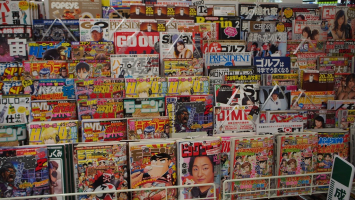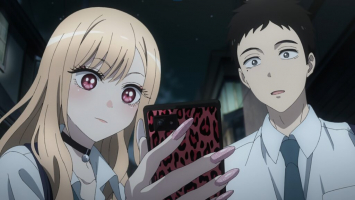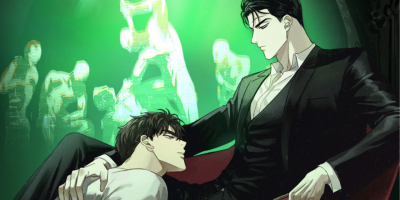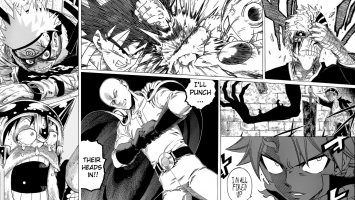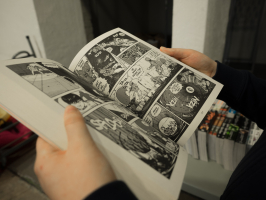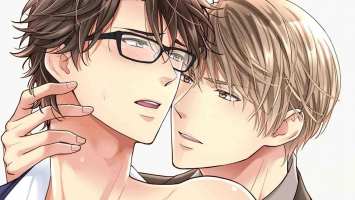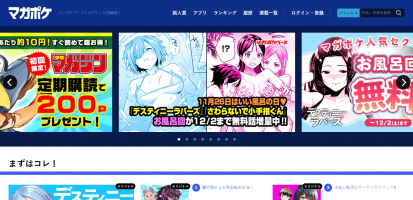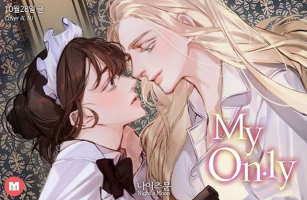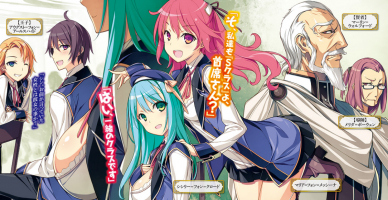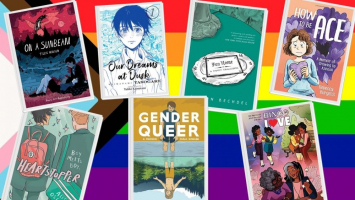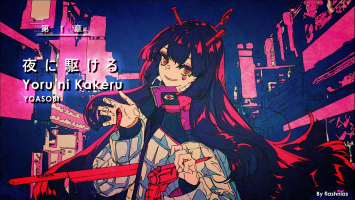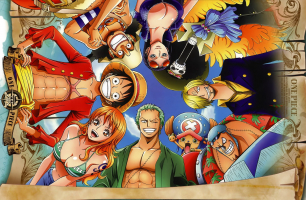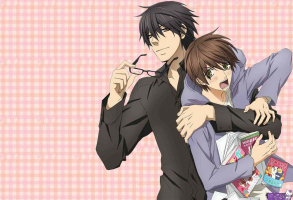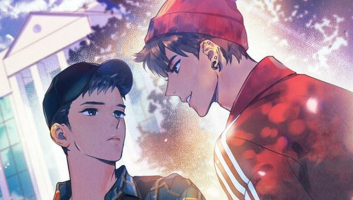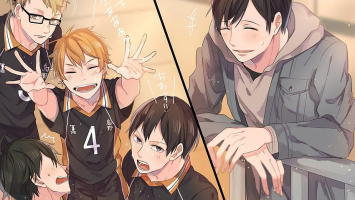Top 10 Best Japanese Manga Magazines
Curious about the best Japanese manga magazines? Explore the list of reliable manga magazines carefully collected by Toplist. They are the primary means by ... read more...which manga authors are published, with the chapters of well-known series being compiled into volumes called tankobons. Let's dive in!
-
Weekly Shonen Jump is a weekly shonen manga collection published in Japan by Shueisha under the Jump line of magazines. There are a lot of action scenes and some comedic ones in the manga series in the magazine. It has been published continuously for a very long time. The first issue's cover date of August 1, 1968 makes it one of the oldest manga magazines.
Since 1968, the magazine has sold approximately 7.5 billion copies, making it the best-selling comic/manga publication. From the mid-1980s to the mid-1990s, the magazine's circulation peaked at 6.53 million copies per week. It has a weekly circulation of more than 1.3 million copies in 2021. Weekly Shonen Jump is the source of many of the best-selling manga series.
As the journal transitioned to digital distribution, print circulation began to drop once more. This drop is consistent with other magazines in the industry. Shonen Jump Weekly has sister magazines such as Jump SQ, V Jump, Saikyo Jump, and Shonen Jump+. It also inspired a crossover media franchise that includes anime and video games that use numerous Shonen Jump characters.
Weekly Shonen Jump, in collaboration with parent company Shueisha, offers annual one-shot story challenges for new or upcoming manga artists. The best are judged by a group of judges (including previous and contemporary manga artists), and the best are granted a special award for the best of these new series.
Founded: 1968
Publisher: Shueisha
Circulation: 1,176,667Website: https://www.shonenjump.com/j/index.html
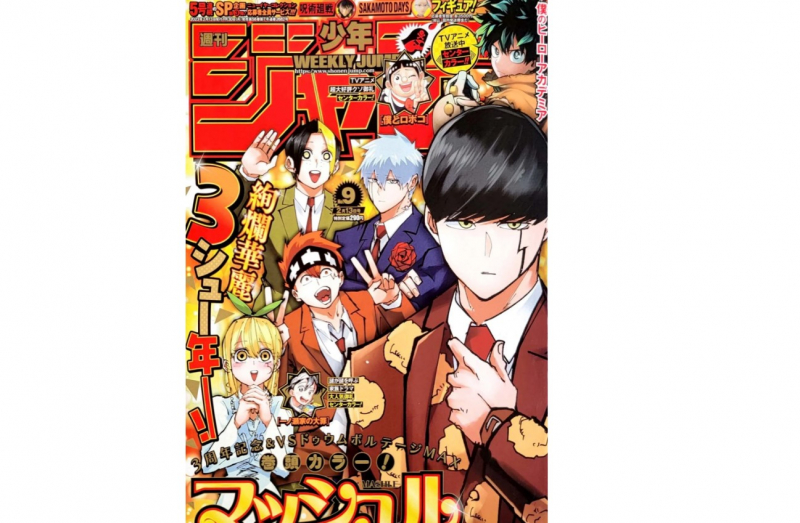
https://japanresell.com/ 
Screenshot of https://www.destockjapan.com/ -
Weekly Shonen Magazine would be the next best Japanese manga magazine. Weekly Shonen Magazine is a weekly shonen manga magazine published by Kodansha on Wednesdays in Japan since March 17, 1959. The magazine is mostly read by an older population, with a significant portion of its readership consisting of male high school or college students.
According to the Japanese Magazine Publishers Association, the magazine's circulation has decreased in each quarter since records were first collected in April-June 2008. This, however, is not a unique incident, as digital media continues to grow in popularity.
The Weekly Shonen Magazine became popular in the 1970s and saw a surge in sales. As a result, it became the best-selling manga magazine in Japan at the time, gaining popularity among many otaku. By March 2008, the magazine had published 2,942 issues and had sold 4.55 billion copies, with a weekly circulation of 1,546,567.
Shonen Magazine reappeared in October 1997, restoring its old status as the best-selling manga magazine of the time until a deal was reached in 2002. Regarding market circulation, Shonen Jump and Shonen Magazine are competing fiercely. The two magazines' sales are now fairly close. Due to the close proximity of the two magazines' start dates, Weekly Shonen Magazine and Weekly Shonen Sunday published a special combined edition on March 19, 2008.
Founded: 1959
Publisher: Kodansha
Circulation: 370,083Website: https://shonenmagazine.com/smaga
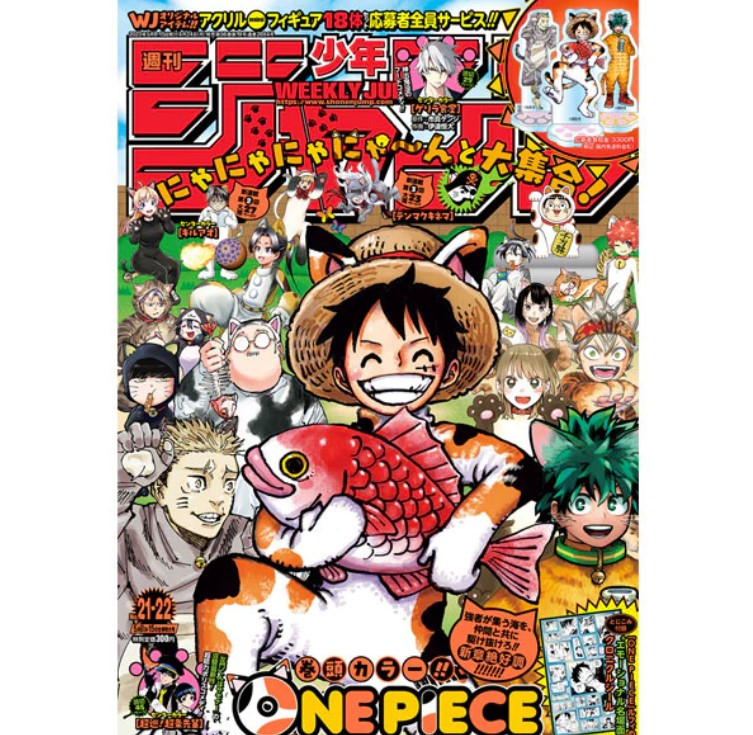
Screenshot of https://www.yattajapan.com/ 
Screenshot of https://jumpichiban.com/ -
CoroCoro Comic, founded on May 15, 1977, is a monthly Japanese manga magazine published by Shogakukan. Its primary audience is boys in elementary school. Several of its properties, like Doraemon and the Pokémon video game series, have become cultural phenomena in Japan. CoroCoro Comic is published on the 15th of each month or earlier if the 15th falls on a weekend.
The magazine debuted in 1977 as a supplement to Doraemon, one of Japan's most popular manga. Doraemon had previously been serialized in six Shogakukan magazines, with the intended demographic being students in the sixth through eighth grades. It compiled Doraemon stories from several magazines.
CoroCoro promotes toys and video games related to their manga series on a regular basis, publishing tales and articles about them. Pocket Monsters/Pokémon's huge popularity in Japan can be attributed to this in some ways. The Game Boy game Pocket Monsters Blue was first distributed solely through the magazine, which aided CoroCoro's sales as well.
CoroCoro is also a good place to find out about new Pokémon games and movies. Tariji Sasaki, the cover designer for CoroCoro Comics, was named the longest-running cover designer for a children's magazine by Guinness World Records on November 20, 2020.
Founded: 1977
Publisher: Shogakukan
Circulation: 333,333Website: https://corocoro.jp/

Screenshot of https://meccha-japan.com/ 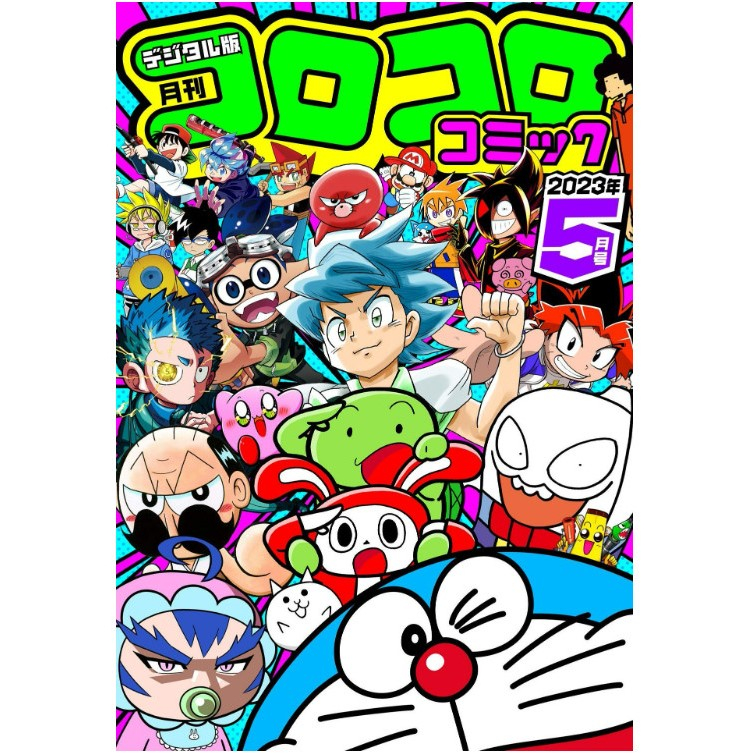
Screenshot of https://meccha-japan.com/ -
Weekly Young Jump is a Japanese seinen manga magazine published by Shueisha. It is definitely one of the best Japanese manga magazines. It was first published in 1979 as part of Shueisha's Jump magazine brand. Every four months, the chapters of the series in Weekly Young Jump are collected and released in Tankobon volumes under the "Young Jump Comics" name.
Young Jump began as a monthly magazine in May 1979 and converted to a weekly distribution schedule in 1981. Young Jump is aimed at an older male audience than Shonen Jump, specifically young adults and businessmen. That’s why many of its best-known series can be very detailed, based deeply on historical details, or, on the other end of the spectrum, quite violent or sexual.
Young Jump is significantly friendlier to new series than its Shonen cousin, allowing them far more of an opportunity to succeed, resulting in a higher average length of serials. Young Jump has multiple titles that lasted for a few dozen volumes despite not having the same global popularity as Kingdom, Gantz, and Salaryman Kintar, which are among the best-selling seinen franchises of all time.
Weekly Young Jump, one of Shueisha's most successful franchises, produced a number of spin-off magazines, the majority of which have only lasted a few years. Some spin-offs are Miracle Jump, Jump X, Aoharu, Ultra Jump, and Monthly Young Jump.
Founded: 1979
Publisher: Shueisha
Circulation: 274,167Website: https://youngjump.jp/

Screenshot of https://japanresell.com/ 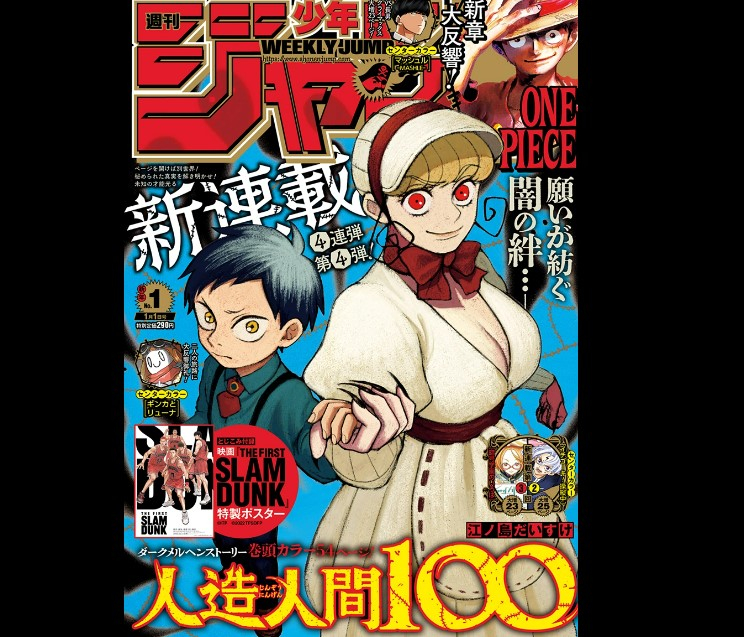
Screenshot of https://jump.fandom.com/ -
Big Comic Original is a Shogakukan-published Japanese seinen manga magazine aimed mostly at older adults and men. It is a sibling publication to Big Comic, with the main difference being that it is available twice a month during the weeks when Big Comic is not.
Original has several crossover authors and many design similarities, but it is not intended for the same demographic as Big Comic and has been the more mainstream of the two in recent decades. The dozen or so manga serials currently running cover a wide range of topics, from historical dramas and suspense to sports and romance, with little science fiction or fantasy.
Big Comic Original, like Big Comic, has had several decades-long franchises from great mangaka. Haguregumo, Abu-san, Tsuribaka Nisshi, San-Chime no Yuhi: Yuyake no Uta, Kaze no Daichi, and Tasogare Ryseigun are other examples. Many of these works and authors are unknown to English audiences, although it has also featured notable works by more internationally known authors.
The cover artwork frequently includes a dog or cat as well as a haiku. Though the creative style or sorts of animals have changed over time, the cover design has generally remained animal-themed. Because the covers have no reference to the manga or current events, a previous cover is occasionally reused.
Founded: 1972
Publisher: Shogakukan
Circulation: 265,500Website: https://bigcomicbros.net/bigoriginal/
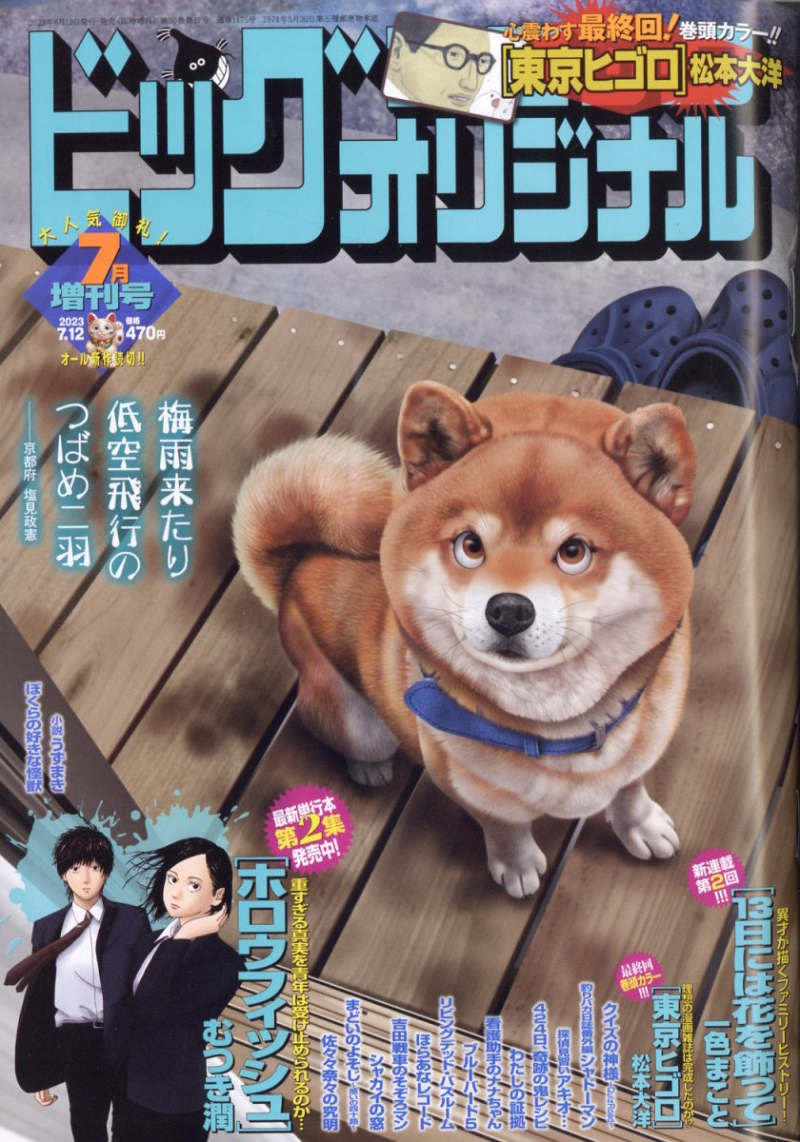
Screenshot of https://twitter.com/ 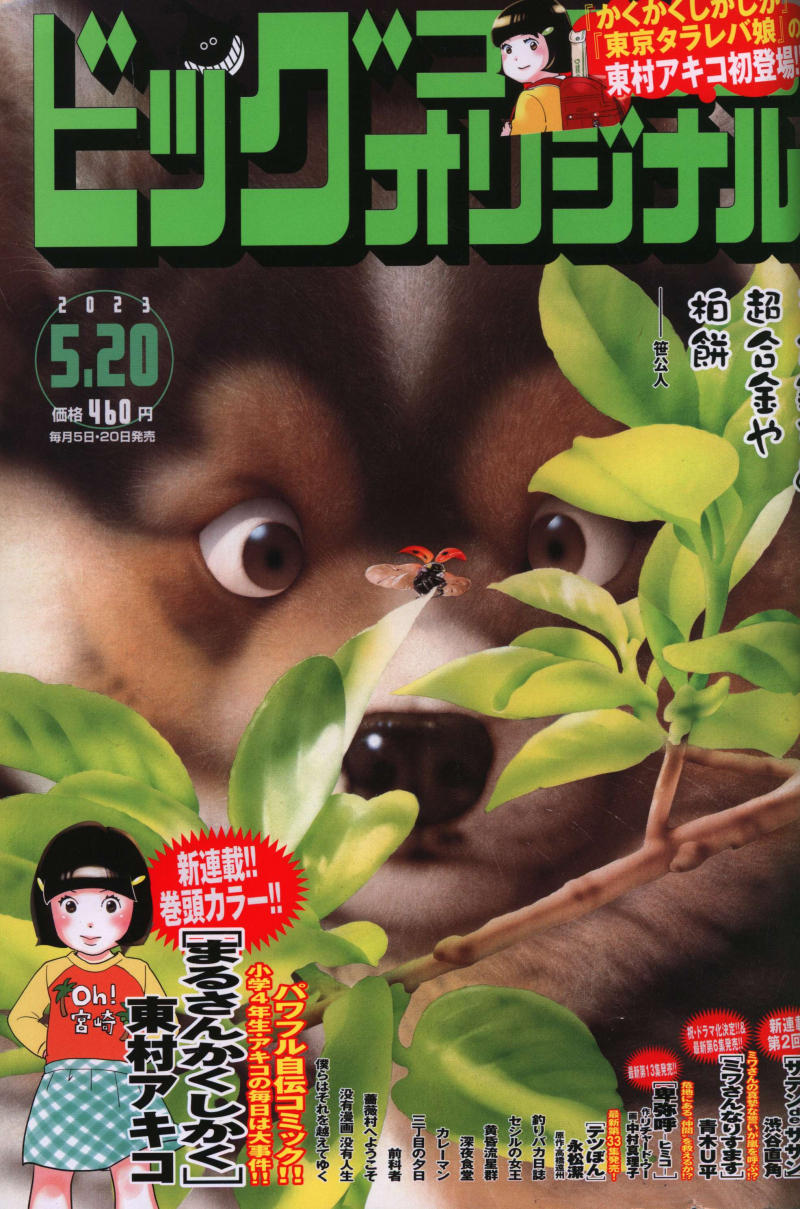
Screenshot of https://order.mandarake.co.jp/ -
Monthly Shonen Magazine is a monthly shonen manga magazine produced in Japan by Kodansha. It was first published in 1964 as Bessatsu Shonen Magazine. It was renamed Monthly Bessatsu Shonen Magazine in 1969, and its publishing frequency was raised from quarterly to monthly. After a brief hiatus in 1974, it resumed publication, and in 1975 it was renamed the present magazine title.
In 2015, it introduced a supplement magazine named Shonen Magazine R. The magazine used to publish a new issue every two months until it became a digital-only magazine with a monthly schedule in October 2019. In February 2023, they released Monthly Magazine Base, a digital-only supplement magazine, to meet global demand, showcasing how diverse and expansive the magazine is.
The magazine included thrilling fiction, epic adventures, significant tragedies, and adrenaline-fueled combat. Its monthly releases have given brilliant manga artists a chance to demonstrate their creative abilities and delight fans with a variety of genres and unforgettable characters. It is also considered as one of the best Japanese manga magazines.
"Fairy Tail," "The Seven Deadly Sins," "Say I Love You," and "UQ Holder!" are among the well-known manga titles published in Monthly Shonen Magazine. Monthly Shonen Magazine is noted for offering manga series with longer chapters and more complicated stories than other magazines due to its monthly publication schedule. This enables more detailed character development and plot arcs.
Founded: 1964
Publisher: Kodansha
Circulation: 164,333Website: https://gmaga.co/
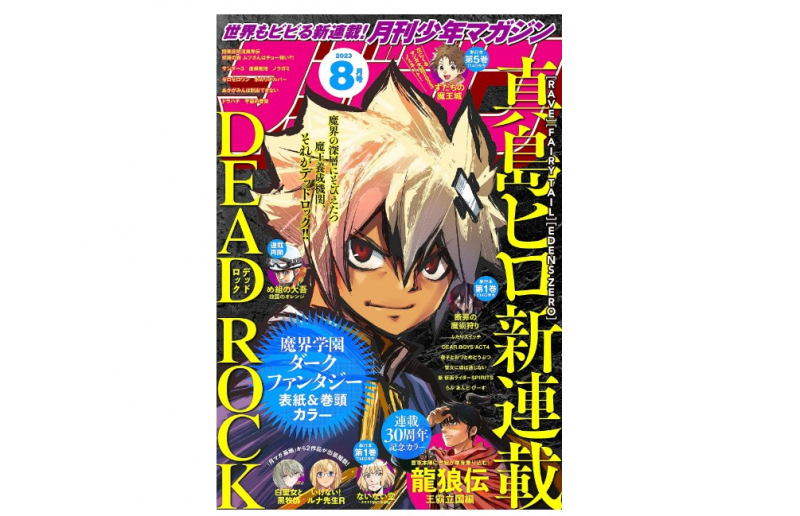
Screenshot of https://jdworld.org/ 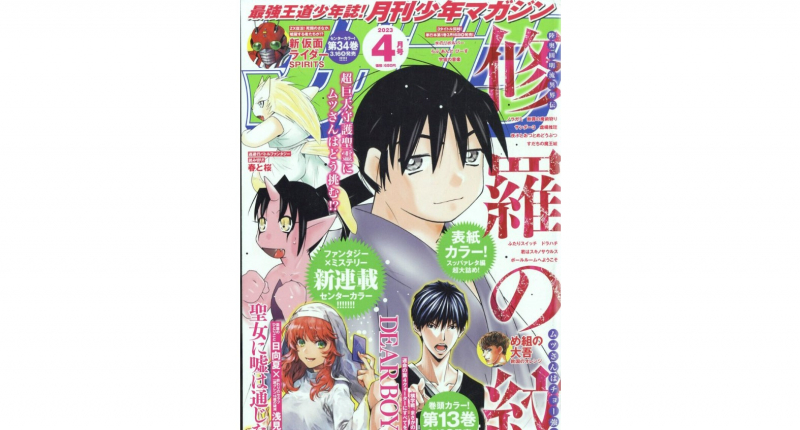
Screenshot of https://www.ebay.com/ -
Big Comic is a semimonthly seinen manga magazine published in Japan by Shogakukan on February 18, 1968. It began as a monthly magazine but began publishing twice monthly on the 10th and 25th of each month in April 1968. It is partnered with sister magazine Big Comic Original, and it is available during the weeks that Big Comic Original is not.
Osamu Tezuka, Shotaro Ishinomori, Sanpei Shirato, Takao Saito, Fujiko Fujio A, Fujiko F. Fujio, and Tetsuya Chiba have all had works published in the magazine. Big Comic also publishes Saito's Golgo 13, the oldest manga series currently in print.
In 2008, circulation was believed to be slightly more than 500,000 copies. However, by mid-2015, it had dropped to 315,000 as part of an industry-wide decline in manga magazine sales. For nearly forty years, the front cover of the magazine featured a caricature of a famous person by manga illustrator Shuichi Higurashi.
Founded: 1968
Publisher: Shogakukan
Circulation: 163,167Website: https://bigcomicbros.net/bigcomic/
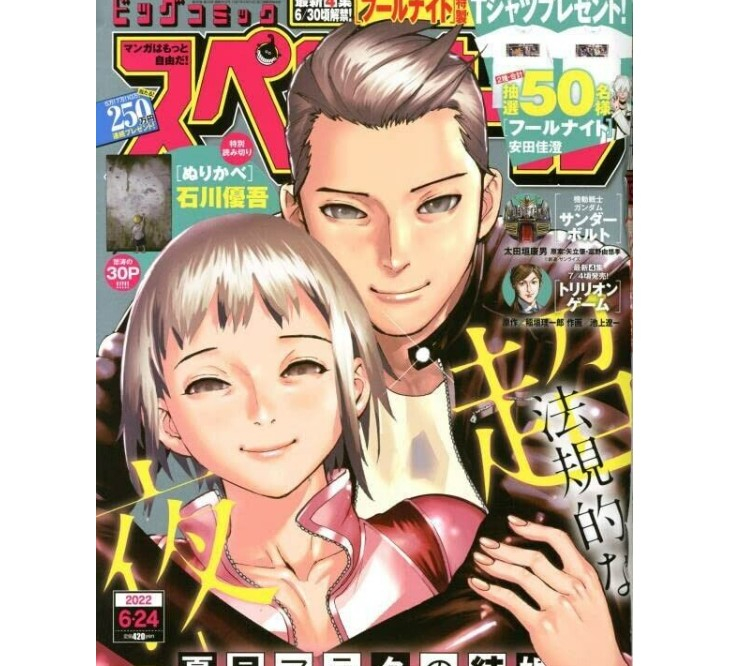
Screenshot of https://www.ebay.com/ 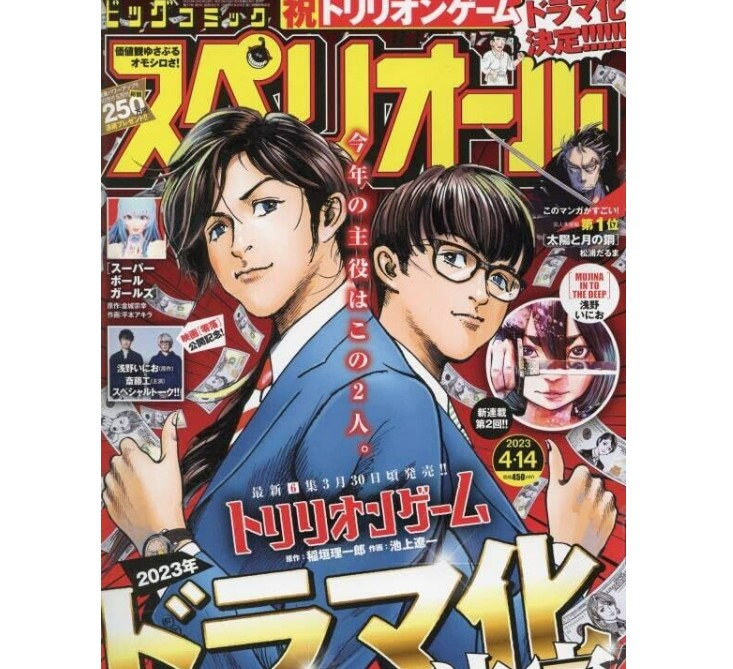
Screenshot of https://www.ebay.com/ -
Since March 1959, Shogakukan has published Weekly Shonen Sunday, a weekly shonen manga magazine. Weekly Shonen Sunday issues, contrary to their title, are published on Wednesdays. Since 1986, Weekly Shonen Sunday has sold over 1.8 billion copies, making it the fourth best-selling manga magazine, trailing only Weekly Shonen Jump, Weekly Shonen Magazine, and Weekly Young Jump.
Since its debut, this legendary manga magazine has featured some of the most compelling and innovative stories ever told, providing a haven for manga enthusiasts seeking thrills and adventure. Its success is unsurprising, given that it consistently delivers some of the genre's most popular games. No wonder it is one of the best Japanese manga magazines.
The unique "pointing finger" in the lower corner of every page on the left side of the magazine first appeared in the 4/5 issue of 1969. This discrete trait, always present but sometimes overlooked, was mentioned as a story aspect in 20th Century Boys. Sunday's more visible mascot, a helmeted fish, first appeared in the 1980s.
Weekly Shonen Sunday and Weekly Shonen Magazine produced a special joint issue on March 19, 2008, an uncommon occurrence due to the proximity of the two magazines' founding dates. As part of the celebrations, more memorial events, products, and manga crossovers were planned for the next year.
Founded: 1959
Publisher: Shogakukan
Circulation: 160,417Website: https://websunday.net/
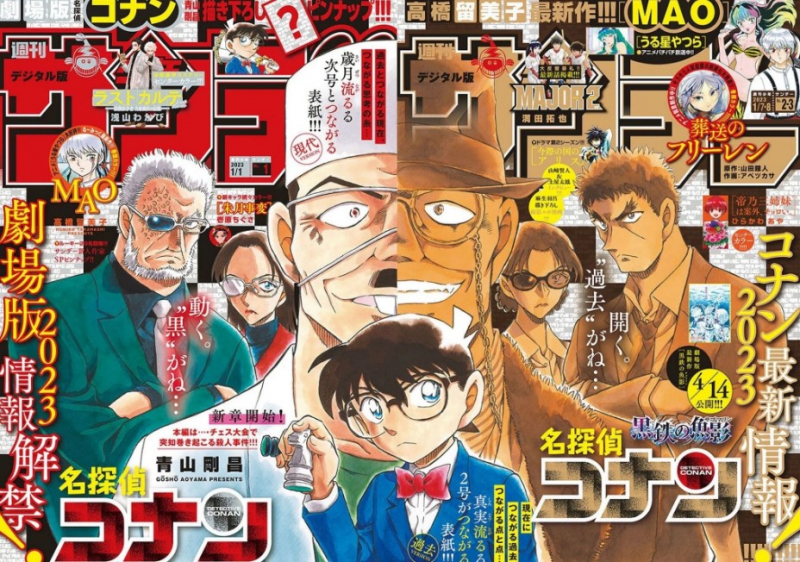
Screenshot of https://japanresell.com/ 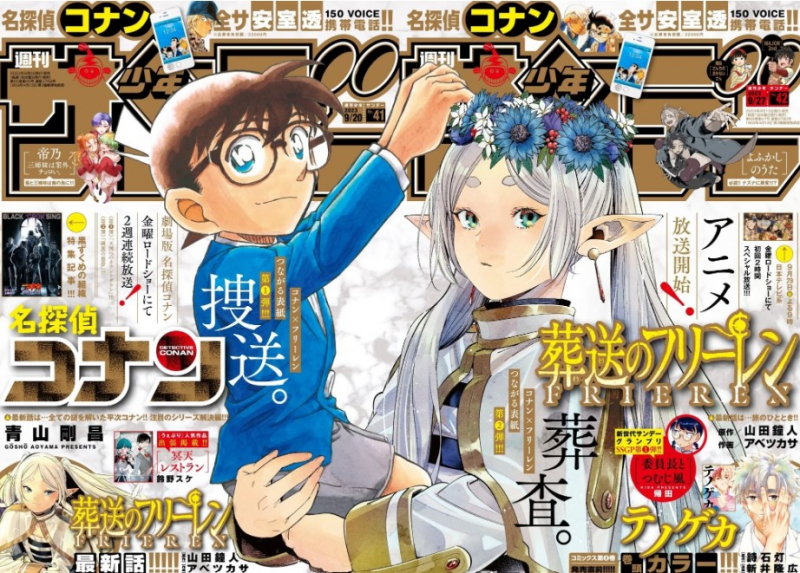
Screenshot of https://japanresell.com/ -
Ciao is a Japanese shojo manga magazine published by Shogakukan. The magazine debuted in 1977 and always includes a free gift, which used to be paper crafts but now varies monthly. Ribon and Nakayoshi are the magazine's rivals. Ciao Comics publishes manga under the Ciao Comics imprint.
Ciao magazine is all about perfectly combining cuteness and coolness into thrilling tales and articles to stimulate their own hopes and objectives as motivating and interactive reading for young girls. This magazine is known for showcasing charismatic heroines as they sing, challenge, and stand up to succeed in their world.
It has previously published vibrant manga such as Revolutionary Girl Utena and Kirarin Revolution. Ciao keeps its readers personally in touch and involved with their favorite idols and characters through blogs and fan communication. It creates a place for them to talk about their best things, from pets to interests.
Founded: 1977
Publisher: Shogakukan
Circulation: 143,333Website: https://ciao.shogakukan.co.jp/
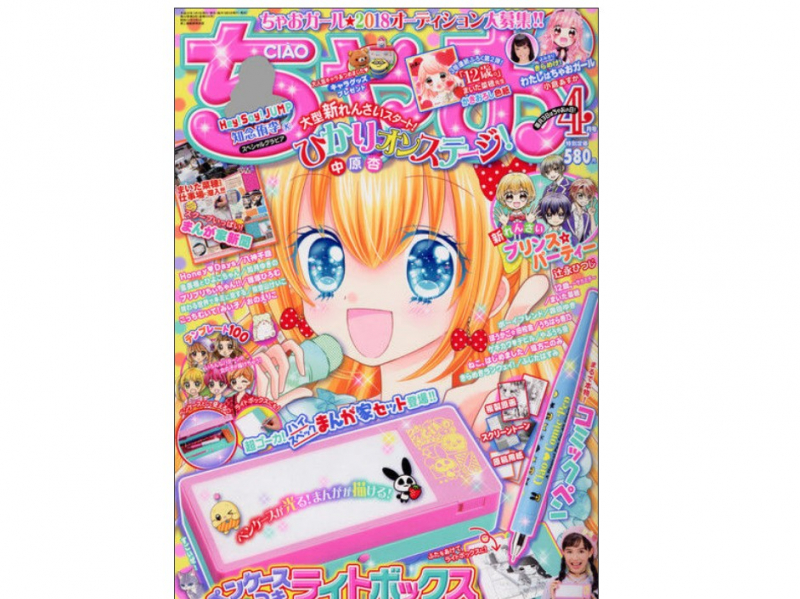
Screenshot of https://www.animenewsnetwork.com/ 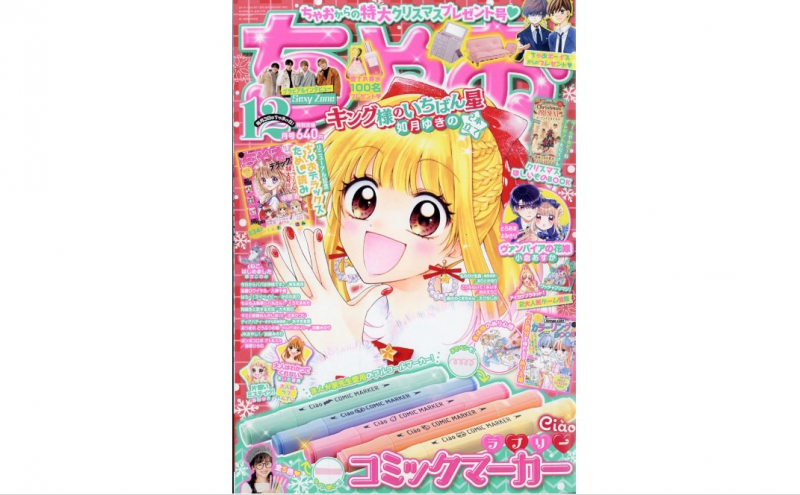
Screenshot of https://shojo.fandom.com/ -
To end the list of the best Japanese manga magazines, Toplist would like to mention Ribon. Shueisha publishes Ribon, a monthly Japanese shojo manga magazine, on the third of each month. Its rivals are Nakayoshi and Ciao, which were both released in August 1955. With over 590 million copies sold since 1978, it is one of the best-selling shojo manga magazines.
Issues are frequently over 400 pages long and printed on multicolored newsprint. They come with a bag of goodies (furoku) ranging from little toys to colorful notepads based on the manga printed in the magazine. In select issues, readers can send in stamps for mail-order gifts (zen-in).
Ribbon magazine has been fascinating and motivating young women for over 60 years, with heartbreaking and strangely entertaining stories. Once home to some of Japan's most beloved characters, such as Sally the Witch and Chibi Maruko Chan. Their influence can be seen in each new and upcoming manga, with its amusing characteristics and surprisingly mature themes that deal with relationships, friendships, and modern challenges for girls as they grow up.
This magazine seeks to assist the future generation of manga artists by providing useful comic-creation and drawing guidance, as well as hosting competitions and events to stimulate even more engaging content. This magazine's manga series are eventually collected and released in book form (tankbon) under the Ribon Mascot Comics (RMC) banner.
Founded: 1955
Publisher: Shueisha
Circulation: 125,000Website: https://ribon.shueisha.co.jp/
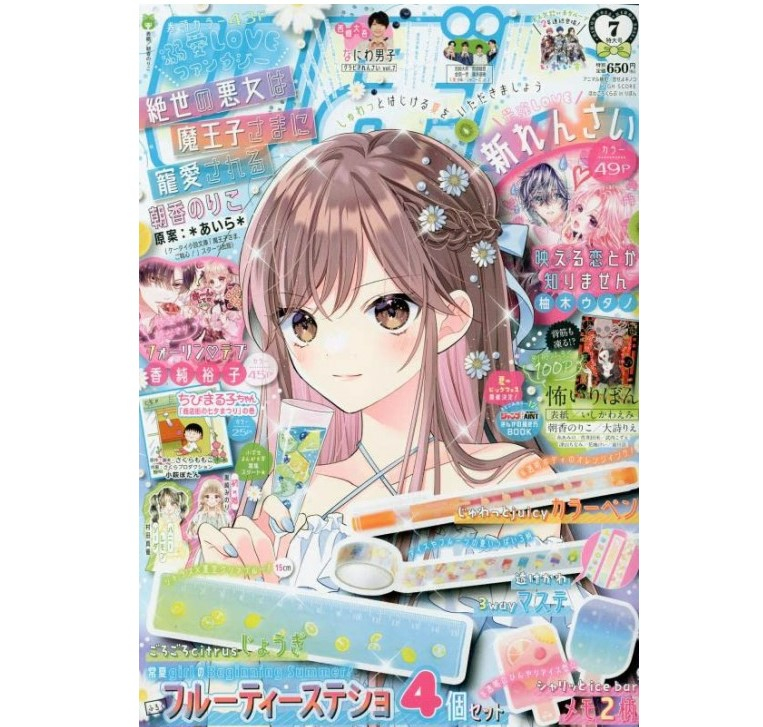
Screenshot of https://www.madamechocolat-shop.com/ 
Screenshot of https://www.amazon.com/












